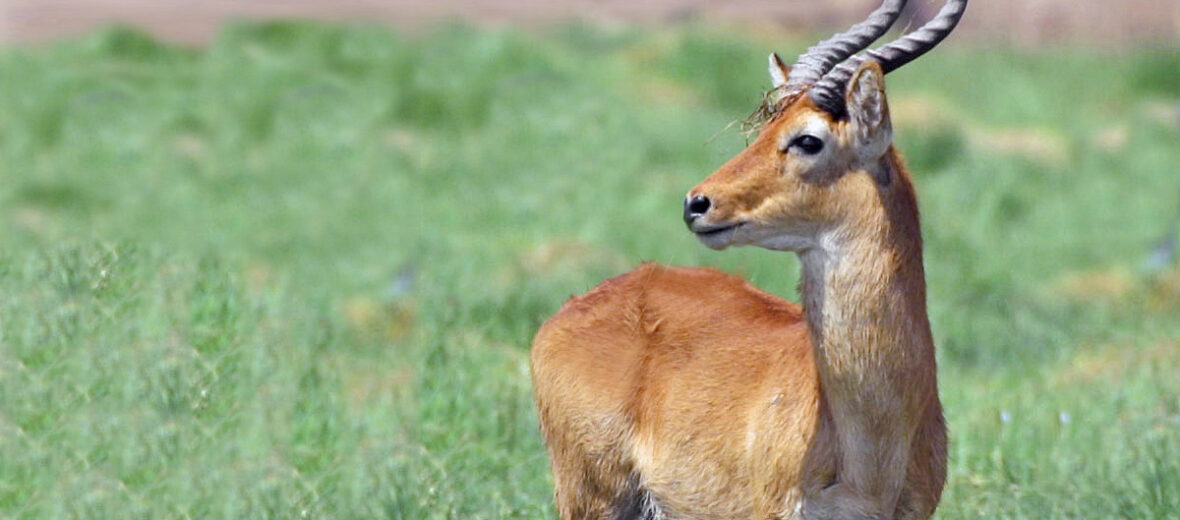
Hailing from Democratic Namibia, Tanzania, Republic of Congo, and Zambia, the puku prefers floodplains and marshy grasslands within the dambos (shallow wetlands) and Savanna woodlands. Due to habitat destruction at the hands of agriculture and housing developments, hunting, and trapping these antelopes are listed as Near Threatened by the IUCN. Their numbers are also decreasing.
First the Stats…
Scientific name: Kobus vardonii
Weight: Up to 160 lbs.
Length: Up to 4.4 feet
Height: Up to 31 inches, at the shoulder
Lifespan: Up to 17 years
Now on to the Facts!
1.) These antelope are crepuscular (active at dawn and dusk).
2.) When startled or threatened, they emit a repeated, shrill whistling sound.
3.) Like other antelope, they gather into various herd types: bachelor herds, spinster herds, and mixed herds (comprised of an alpha male and several females.
4.) Puku antelope graze on various types of grasses.
5.) As is the case with antelopes, they are polygynous (1 male mates with multiple females).
But wait, there’s more on the puku!
6.) Leopards, lions, and crocodiles prey on puku antelopes.
7.) Mating season lasts year round, with concentrations from May – September.
Did you know…?
Pukus can run up to 50+ mph, for short distances. Then they will stop to re-evaluate the situation.
8.) Females undergo up to an 8 month gestation (pregnancy) that yields a single calf.
9.) The female will birth her calf in a secure location and the calf will stay there, hidden, for up to 6 months; until it’s ready and strong enough to join the herd.
10.) Their population numbers an estimated 130,000.
Now a Short Puku Video!
Be sure to share & comment below! Also, check out the Critter Science YouTube channel. Videos added frequently!
Want to suggest a critter for me to write about? Let me know here.



